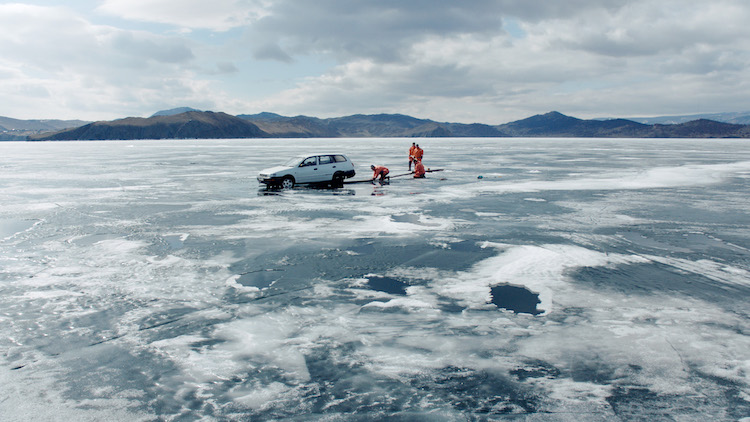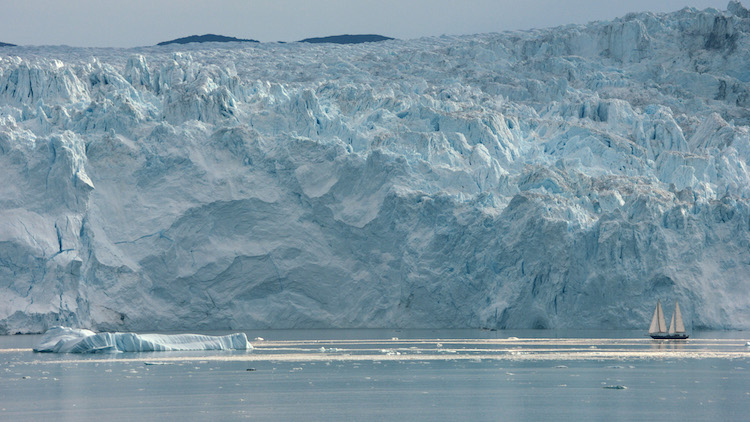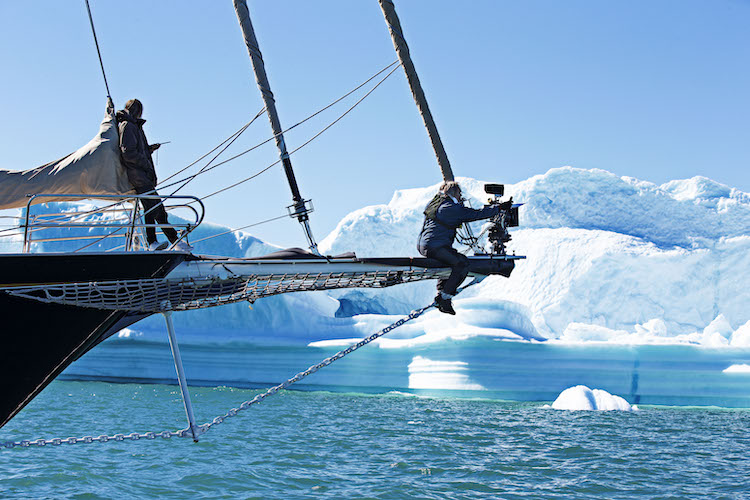The Weight of Water

Though the phrase “cinematic experience” is somewhat overused and should generally be met with suspicion, Victor Kossakovsky’s Aquarela can hardly be called anything else. This startling documentary about the earth’s most versatile element, water, is a mind- and eye-boggling trip, evoking both sadness and exhilaration, among other strong emotions. Shot at 96 frames per second, as opposed to the usual 24 (though theaters are only equipped to show it at 48 fps, at most), its rich visuals are so smooth they sometimes seem like CGI, but there is nothing artificial about this film.
Filmed in seven different countries, Aquarela opens on frozen Lake Baikal in Siberia, where several men are attempting to retrieve something from under the surface. Amid amplified sounds of cracking, groaning ice, it soon becomes apparent that a car has fallen into the lake. As dramatic as this seems, it’s not the last time it happens. We see two more cars speeding along the river as voices yell out “Stop, stop!” to no avail. Turns out that the lake is thawing early this year. This is our introduction to one of the film’s main themes, climate change, though it’s never discussed or openly addressed. It’s also the only scene in the movie with actual dialogue. Human beings, clearly at the mercy of the film’s subject, are not the main focus here. Adding to the strangeness of the scene is a wildly incongruous element of slapstick, as people keep falling through the ice.

The film next moves to Greenland, where there are towering glacier formations, the camera lingering on sparkling, geometrical ridges and fantastical shapes. The peacefully majestic setting is constantly interrupted by ice bergs breaking off and collapsing into the sea. The eerie boom and crash of this glacial calving is somehow deeply melancholy, as the bergs float and bob helplessly like slowly dying monsters. Knowing what we know about the polar ice caps, it’s like watching the planet (literally) die, albeit in a spectacularly beautiful fashion.
Next two furiously toiling sailors attempt to tame a schooner that is making its precarious way through thrashing winds and ocean waves. Not for the first time, we wonder about camera placement, realizing that the film crew is in the thick of it. Kossakovsky obviously went the extra mile (or a thousand) to create his astounding vision. The water is now overwhelming—mighty and terrible.
Aside from the constant tinkling, cracking, rushing, crashing water sounds, Aquarela features intermittent musical accompaniment by Finnish composer Eicca Toppinen and his “cello-metal” band Apocalyptica. Both harsh and beautiful, the music is a fitting counterpart to the dramatic visuals.
The film also visits flooded communities in California in the aftermath of the overflowing Oroville Dam, shown dominated by gushing water. There’s an eerie scene of a partially submerged graveyard, with egrets picking their way around the tombstones as if it’s the most natural thing in the world, which it kind of is.

Aquarela also lands in Miami in the midst of Hurricane Irma, with a slow, punishing drive down wind- and rain-lashed streets, palm trees bending unnaturally. Once again, the death-defying matter of camera placement becomes apparent.
Amidst these locations are hallucinogenic sequences of endless, crashing waves and rushing water; almost vertigo-inducing, they could literally cause seasickness. Long abstract clips of the ocean, both over- and under-water, in color and black and white, are like moving tapestries that have an almost narcotic effect. The movie has a definite impact on the nervous system; trippy for sure, but it’s not always a good trip, nor is it meant to be.
It all ends at Angel Falls in Venezuela, a gorgeous and relatively peaceful evocation of water, and a welcome end to what has been a thrilling, sometimes overwhelming ride. It will take a little while to get back your land legs afterwards.
Aquarela opens on Friday, August 16, at the Landmark at 57 West, AMC Empire (at 48 frames per second), and the Angelika Film Center (also at 48 fps).
—Marina Zogbi

